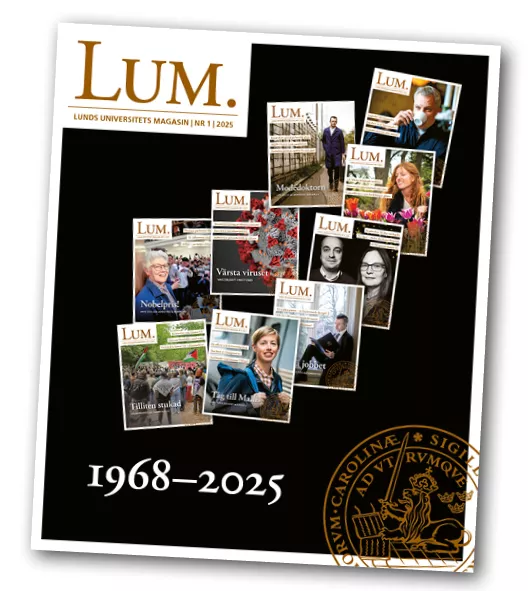By now it is widely known where atomic physicist Anne L’Huillier was when she received the news that she, along with researchers Pierre Agonstini and Ferenc Krausz, had been awarded this year’s prize in Physics. The call came during a break in a lecture she was giving to students of engineering physics. After hanging up, she went back into Rydbergsalen at Fysicum and resumed the lecture as if nothing had happened.
“I didn’t say anything to the students and continued the lecture for another half an hour. It was quite tough, I must say,” said Anne L’Huillier during the press conference that was quickly organised a few hours after the announcement.
Before a crowd of journalists, colleagues, students, family and the University management, she received a standing ovation, visibly moved and happy.
“It feels absolutely incredible. Fantastic! I am very proud.”
Anne L’Huillier was born in France and started her academic career there. She came to Lund in the early 1990s, first as a lecturer and later on a specially funded Tham professorship. The latter was introduced in the 1990s to address the gender imbalance in academia and led to protests against quotas in some quarters. In this case, it was about keeping Anne L’Huillier in Lund after she had received an offer from the University of Gothenburg.
Anne L’Huillier shares the award with Pierre Agostini, professor at the Ohio State University, and Ferenc Krausz, professor at Ludwig-Maximilians-Universität in Munich. The jury’s recommendation commended the researchers “for experimental methods that generate attosecond pulses of light for the study of electron dynamics in matter.”
It was in 1987 that Anne L’Huillier discovered how harmonics of light are produced when infrared laser light is transmitted through a noble gas. Ultimately, her discovery meant that attosecond laser pulses can be used to study how electrons move inside atoms and molecules.
Felt doubt at times
Anne L’Huillier has devoted 36 years to the pursuit of attoseconds. During the press conference, she said that she has had moments of doubt during her career.
“Of course, I have felt doubt at times. Research doesn’t always go in a straight line, it’s more like this,” she said, moving her hand up and down before continuing:
“In the late 1990s, we had the idea that the high harmonics were key, but we didn’t know how to measure them. It was not clear to me how it would work and there was a period of much doubt. Sometimes you struggle for two or three years to understand an experiment. It takes time and requires a lot of work.”
Anne L’Huillier is the fifth woman ever to win the Nobel Prize in Physics. She hopes there will be an increase in the number of female researchers in her field. To other researchers aspiring to achieve similar success, she advises them to find what they are passionate about.
“If you have a passion for science – go for it! Follow your intuition. This applies especially to young women. It is possible to combine a research career with an ordinary life with a family and children.”
In addition to the honour, the three winners will share SEK 11 million. The award ceremony is traditionally held on 10 December in Stockholm.







